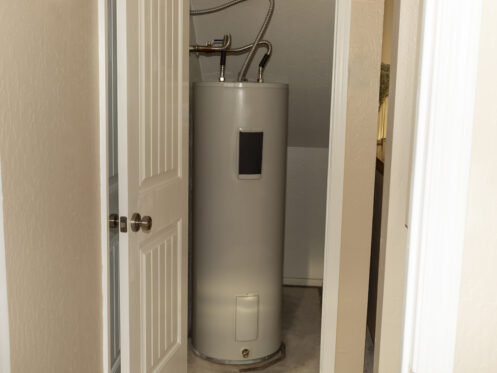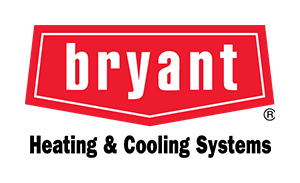Maintaining your water heater is essential for ensuring you always have hot water when you need it. It also makes a difference in the amount of energy your water heater uses and how long it may last. The other important thing to understand is that a neglected or poorly maintained water heater is much more likely to break down and potentially require a quite costly repair. That’s why you want to make sure that you take all of the necessary steps to keep your water heater properly maintained and in good condition.
Turn the Temperature Down
One common mistake many people make with their water heater is having the temperature set too high. Setting your water heater to anything above 120-130 degrees Fahrenheit is simply a waste. For one thing, 120 degrees is hot enough to kill any bacteria in the water, and it’s also sufficiently hot for cleaning and sanitization. Even water that’s only 120 degrees is hot enough to scald you, but water that’s 140 degrees can cause third-degree burns in as little as six seconds.
Keeping your water heater set to 120 degrees reduces how long it has to run. Not only does that mean the water heater will use less energy, but it also lessens the amount of wear and tear it experiences. This last factor is important, as it helps reduce the risk of your water heater breaking down and can extend its lifespan.
The only thing to note is that you never want to set a water heater below 120 degrees. If you do, the water may not be hot enough to kill any bacteria that are present. This is less of a concern with a tankless water heater. However, it can pose a major risk of bacteria growing in a tank water heater and potentially making people in your household seriously ill. The biggest concern is Legionella, as this type of bacteria thrives in warm water and can easily lead to someone contracting Legionnaires’ disease.
You don’t even need to drink water that contains Legionella to get sick. Instead, people usually get sick from breathing in tiny water droplets containing the bacteria that fly into the air when washing dishes, showering, etc.
Drain and Flush Your Water Heater Tank
One of the biggest keys to maintaining a traditional water heater and ensuring it continues functioning effectively is draining and flushing the tank. Unless you have a water softener, some dissolved minerals are always present in your water supply. This is especially the case in Texas where most places have a fairly high concentration of minerals. When the water inside the tank gets heated, it causes some of the minerals to solidify into hard pieces of sediment and then sink to the bottom of the tank. The purpose of flushing the tank is to remove all of the sediment.
If you don’t flush the tank regularly, the sediment buildup will eventually prevent the water heater from working as effectively. That means it will take more time for the water to get fully heated, resulting in longer heating cycles and increased wear. Not flushing your water heater often enough will lead to increased energy costs as well.
If you have a gas water heater, sediment buildup can also increase the chances of the bottom of the tank eventually leaking. That’s because the sediment absorbs heat whenever the water heater is on and can create hot spots that weaken the steel.
Descale and Flush Your Tankless Water Heater
Tankless water heaters also need to be flushed regularly, just for a different but somewhat interrelated issue. You don’t need to worry about sediment buildup with a tankless water heater since it doesn’t store hot water. However, you do need to worry about the limescale and mineral deposits that the water leaves behind in a tankless water heater.
Mineral deposit buildup can create a few issues for a tankless water heater. One is that the minerals basically shrink the inside of the pipes in the water heater, resulting in less water being able to flow through them. That means you can end up encountering situations where the water heater can’t supply enough hot water to meet your current needs.
You may not see much of a difference when you’re showering, but you often will when hot water is running in multiple places at the same time. The other issue is that mineral deposits can collect on the heat exchanger. This can result in less heat flowing out into the water, potentially leading to your water never getting as hot as you want.
Descaling involves using a pump to circulate a descaling solution or white vinegar through the water heater. This helps to loosen and break up the mineral deposits so that they easily get washed away when you then flush the unit with clean water.
Clean the Air Filter and Water Filter on Your Tankless Water Heater
Depending on the type and model of tankless water heater you have, it may have one or two additional maintenance needs. Gas units typically have an air intake filter, which needs to be cleaned regularly to ensure the burners receive sufficient airflow.
If your unit has an inline water filter on the inlet pipe, it also needs to be removed and cleaned regularly. Not cleaning the air filter can result in the burners not producing as much heat and your water possibly not getting fully hot. Not cleaning the water filter will result in less water being able to flow through the unit, reducing how many gallons of hot water the water heater can produce per minute.
Can You Maintain a Water Heater Yourself?
Maintaining a tankless water heater is fairly easy. Nonetheless, it’s still a good idea to have a plumber do everything due to the risk of you accidentally damaging the unit. If you do cause any damage while trying to maintain the unit yourself, the warranty won’t cover the cost of the repairs.
Maintaining a traditional water heater is more complicated, as there are a number of additional tasks other than just flushing out the tank. For instance, it’s necessary to occasionally test the heating elements in an electric water heater to make sure that neither one is dead or starting to wear out. Cleaning the burner on a gas water heater is important for ensuring it heats effectively and doesn’t produce carbon monoxide.
Another essential task with any traditional water heater is removing and inspecting the anode rod. The purpose of this rod is to prevent minerals and impurities in the water from reacting with the tank and causing it to corrode. Instead, they react with the metal coating on the rod so that it gets corroded and eaten away.
It usually only takes around three to five years before an anode rod stops doing its job as a result of most of the metal coating getting dissolved or eaten away. If you don’t replace the rod at this point, the tank will quickly start corroding and eventually begin to leak. That means you’ll then need to immediately install a replacement unit, as a leaky tank is not something that can be fixed.
How Often Should a Water Heater Receive Maintenance?
The basic recommendation is that you should have a plumber inspect and service your water heater at least annually. This is true for both traditional and tankless water heaters. However, if you have hard water, it’s better to have your water heater flushed and serviced twice a year. That’s because hard water leads to sediment or mineral deposits building up inside the water heater more quickly.
Honest Home Services LLC is a family-owned company with over 20 years of combined experience providing top-notch plumbing and HVAC services in Flower Mound, TX. Whether you need help maintaining your water heater or it’s time to install a replacement, you can count on us for expert assistance and advice. To schedule an inspection/maintenance service and ensure your water heater is ready for summer, contact us today.





